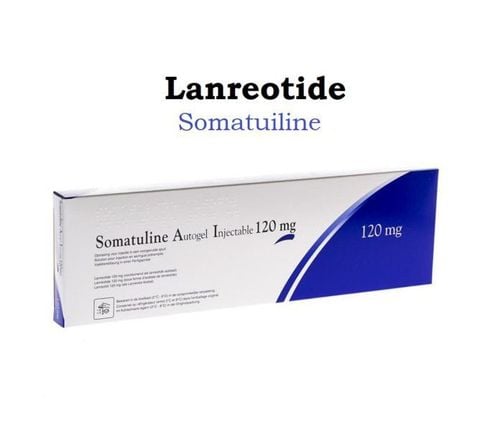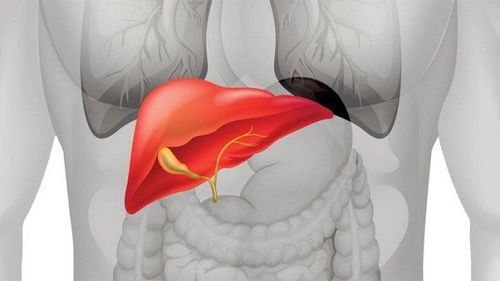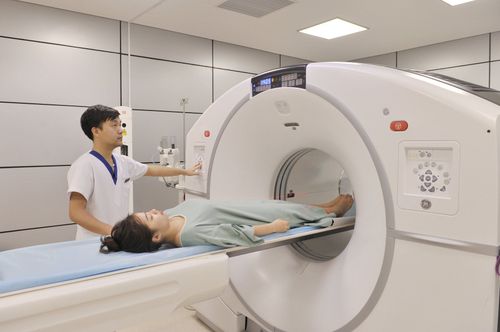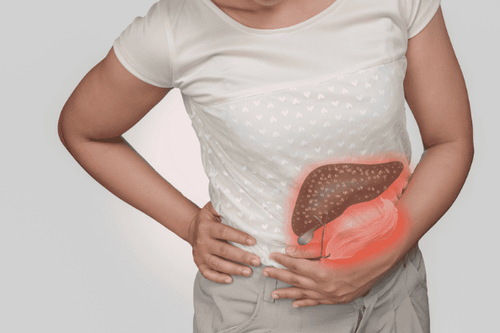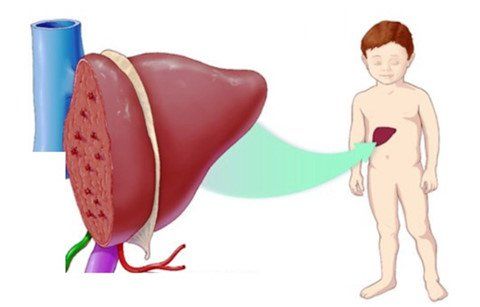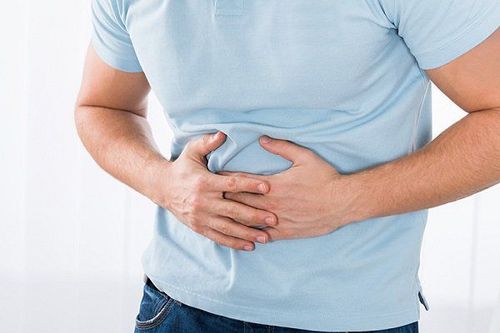This is an automatically translated article.
The article was professionally consulted by Dr. Tran Nhu Tu - Dean and Master, Doctor Nguyen Thanh Nam - Department of Diagnostic Imaging - Vinmec Danang International General HospitalNowadays, science has developed, it is much easier to detect pathologies related to sugar loss. In particular, the method of X-ray cholangiography through the Kehr duct is a method of high value in diagnosis and treatment after surgery for biliary drainage.
1. General outline of Kehr ductal cholangiography
Principle of the method of cholangiography through the Kehr duct: Injecting water-soluble iodinated contrast agent into the biliary tract, this process uses a Kehr tube (postoperative) and is performed under the diaphragm. light or not to examine the biliary tract.
Here we can determine the presence, cause, extent and location of the following pathologies:
Biliary tract tumors, gallstones, blood clots, biliary strictures (you can refer to this article). some types of gallstones and their treatment at Vinmec's website) Assess the degree of narrowing or dilation of the intrahepatic and extrahepatic bile ducts Bile drainage or biliary fistula Survey the circulation of bile through the sphincter of Oddi into the duodenum colon
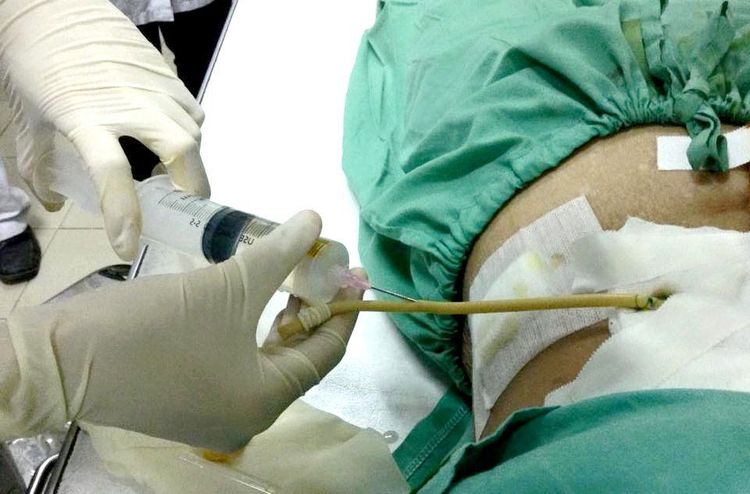
Bơm thuốc đối quang có i-ốt tan trong nước vào đường mật
2. What should be prepared before taking a cholangiogram?
The person performing the Kehr cholangiogram for the patient must be an experienced specialist with the help of an radiologist.Supplies used in cholangiography
Water-soluble iodine contrast agent Physiological saline or distilled water Use a 20mL, 18-20G needle and syringe Gloves, hat, mask, tray peas, tongs. Antiseptic alcohol and iodine swabs Accidental first aid kit in case of an accident when using contrast agents. Before performing a contrast-enhanced cholangiogram, the patient should fast. If he eats, he should only eat a light meal. Avoid eating fermented and fibrous foods that do not require enema. Show the doctor your surgical record to determine the direction and position of the scan. Check all patient information, learn about drug allergies, especially contrast agents and drugs containing iodine. Explain in advance to the patient about the imaging process and also possible complications so that the patient cooperates during the work. Mentally reassure the patient so that the patient does not feel anxious and stressed during the scan.
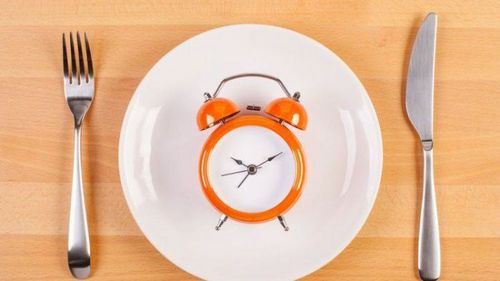
Bệnh nhân cần nhịn ăn trước khi chụp dường mật cản quang
3. Method of conducting cholangiography through the Kehr tube Initial preparation step
Initial preparation step
Instruct the patient to lie on their back on the X-ray table, with both hands raised above the head, legs straight, hanging the drainage bag close to the table. The doctor performs wearing gloves and a mask and a hat. Take about 5mL of iodinated contrast agent with a concentration of 300-400 mg/mL and then mix it with 0.9% NaCl solution in a ratio of 1⁄3 or 1⁄4. Dilution aims to minimize the case of contrast agents covering the loss of gallstones. Or we can use contrast agent with a concentration of 120mg/mL mixed with physiological saline. Prepare the Kehr drain
Swipe the Kehr tube to drain the bile, expel the air, check the tube until there are no air bubbles Clamp the Kehr tube about 3 to 5 cm away from the patient's skin to prevent backflow and reduce residual amount in the tube. Disinfect the upper part of the tube clamp with an alcohol solution of iodine. Slowly inject 20ml of iodine contrast solution into the Kehr tube through the sterilization site. Note that the syringe must be raised at an angle of more than 45 degrees to prevent gas from entering the biliary tract. During the implementation process, it is necessary to monitor the patient for early detection and timely treatment of allergic reactions or complications with contrast agents.
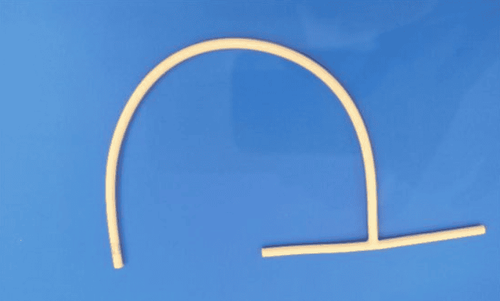
Ống dẫn lưu Kehr
Process of taking cholangiogram through Kehr tube
Adjust the patient's position to lie on the left side so that the contrast agent can easily enter the left hepatic bile duct, then lie on the back for imaging. The doctor watched on the screen as the drug filled the entire biliary tract, then asked the patient to hold his breath. At this time, conduct imaging and preliminary diagnosis in order to choose the necessary positions to expose the lesions in the biliary tract. Shooting positions
Straight position to survey the entire biliary tract: The central ray passes through the midpoint of the right lower quadrant, perpendicular to the film. Taking the right lateral position behind to examine the biliary tract in the right liver: Turn the patient to the right side, the right leg is straightened, the left leg is bent to fix the direction of the posture. Make sure the back makes an angle of about 15 to 20 degrees with the table top, adjust the slope of the table to the head about 15 to 20 degrees, the center ray perpendicular to the film through the midpoint of the right lower quadrant. Posterior left oblique position to examine the left hepatic bile duct: The position and slope of the table are similar to those obtained from the right posterior oblique position, noting that the central ray is perpendicular to the film through the midpoint of the nasopharynx. The upright position helps to investigate the drug circulation down the duodenal area: Place the patient in the supine position as before, with the table tilted low about 15 to 20 degrees towards the legs. The central ray passes through the midpoint of the right hypochondrium and is perpendicular to the film. Take right lateral position to investigate the location of biliary tract injury: Rotate the patient to the right, adjust the central beam so that this ray is perpendicular to the center of the film at the junction of the right hypochondrium and the middle axillary line. .
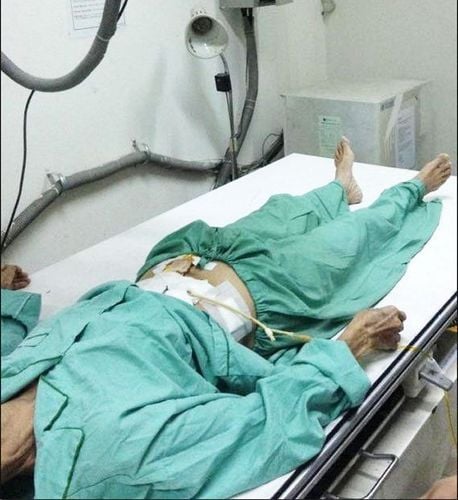
Tư thế chụp X quang đường mật qua ống Kehr
After completing the X-ray, we proceed to smoke all the contrast in the biliary tract. Perform disinfection and remove the clamp or just after disinfecting and removing the clamp, the drug will flow out by itself through the Kehr drain.
Requirements on imaging results
Adjust the appropriate contrast The film must reveal the entire biliary tract and the liver outside.
4. Handling in case the patient has a contrast agent accident
In case the patient has a stroke with contrast agent, the doctor needs to do the following actions:
Limit the free dark part to enter the biliary tree, which leads to the machine taking out a false image of the stone. Contrast makes it very easy to make mistakes in the diagnostic process. Minimizing the irradiation time, reducing the irradiation constant helps to reduce the possibility of radiation contamination for the patient. Reducing the speed of drug injection reduces feeling of discomfort, limits the case of biliary fistula and perforation of the biliary tree for the patient.
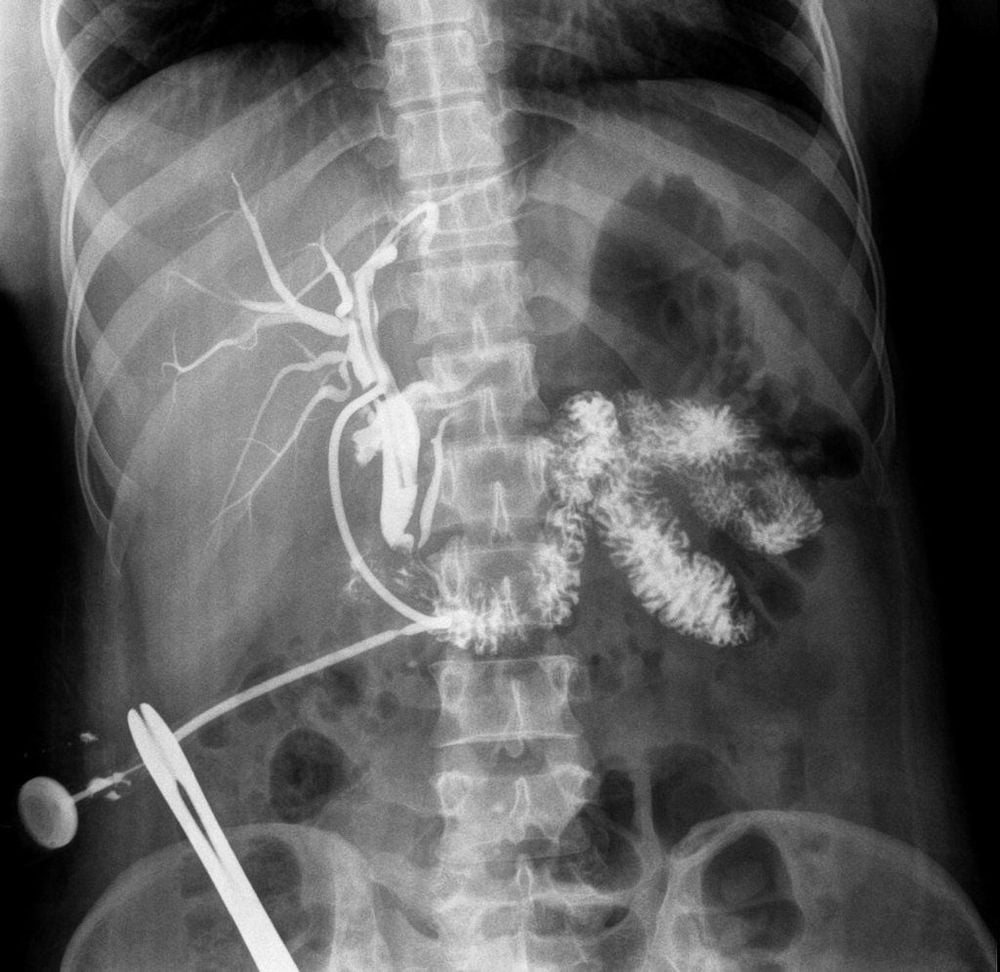
Kết quả chụp X quang đường mật qua ống Kehr
MORE:
Gallstones in the liver - What you need to know Learn about laparoscopic surgery to remove common bile duct stones with Kehr drainage Congenital biliary stricture: Causes, symptoms, diagnosis and treatment
Recommended video:
Don't be subjective with gallstone disease





